Are you looking for a “Stopping by Woods on a Snowy Evening” analysis? Well we have the best analysis of this famous Robert Frost poem that you will find anywhere!
First, we’ll give some background information. Second, we’ll explore the rhyme scheme, meter, and form of the poem in relation to mood and tone. Third, we’ll lead you through an almost line by line breakdown analysis, where we explore the poem’s literary devices, figurative language, and imagery. Finally, by way of summary, we’ll offer our own unique interpretation of the poem.
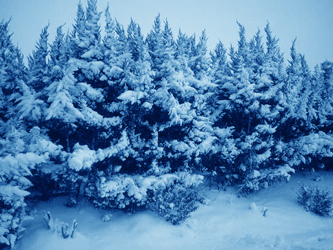
Stopping by Woods on a Snowy Evening: Analysis of Background
• Stopping by Woods on a Snowy Evening by Robert Frost was first published on March 7, 1923 in The New Republic.
• Stopping by Woods on a Snowy Evening is one of Frosts most popular poems. In a 1998 poll conducted over an entire year asking participants about their favorite poems, Robert Pinsky determined Stopping by Woods on a Snowy Evening ranked second, being beat only by Robert Frost’s other famous poem, “The Road Not Taken”.
• Even among critics there are many varying interpretations of Stopping by Woods on a Snowy Evening. Despite this, Robert Frost often specifically stated people were reading too much into the poem.
• Stopping by Woods on a Snowy Evening was written almost immediately after writing a much longer more difficult poem New Hampshire. After writing that poem the poem came to Frost all at once, and he wrote it that way. New Hampshire is not considered one of Frost’s better, poems, but is very famous. So there is a bit of irony here in that the more famous poem came to Frost very quickly and easily, but the lesser famous one he worked long and hard at.
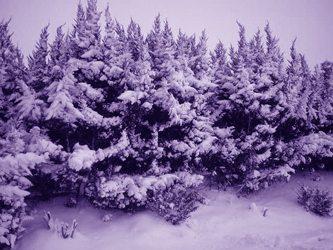
Stopping by Woods on a Snowy Evening: Analysis of Technique
Any “Stoping by Woods on a Snowy Evening” analysis must note the classical rhyme scheme. While it calls to mind the troubadours of medieval Europe, the form used is actually closer to a Persian form called the Rubáiyát than it is anything else.
If you look at the first stanza of the poem. Lines one, two, and four all rhyme. However, line three is an outlier. But then as we go to the second stanza, we see that the outlier carries over into the second stanza. This pattern is repeated until we get to fourth stanza. Using small letters we can represent the rhyme scheme in the following manner:
a a b a
b b c a
c c d c
d d d d
Note, Frost is not faithful the Rubáiyát form in the final stanza. Still as in the fourth stanza we are dealing with sleep, this seems to fit, as if the narrator is nodding off and missed the rhyme. This helps set the tone of the final stanza.
Some have suggested that this rhyme scheme is to used to create the feeling of snow. Flakes of snow don’t quite fall straight, and they seem to catch up with one another at times. So the slightly off pacing of the rhymes can be argued to convey this image.
Similarly, one could argue that off key rhymes represents the unknown and chaotic essence of nature—which is why when the narrator turns back toward civilization, the third line’s rhyme then agrees with all the others.
Surely other explanations might also exist.
The meter and pacing in the poem is very important. They very much carry one through the poem as if it were a song. Each line is precisely eight syllables, the first syllable is not accented while the second is. So each line comes off like this.
daDUM daDUM daDUM daDUM
This is called a iambic tetrameter. There are basically four beats of unstressed syllables followed by stressed syllables. One can argue this rhythmic beat provokes in us a sense of primeval—and in some ways this fits with various themes of the poem.
Finally, there is some degree of alliteration in the poem. For example in the first stanza words beginning with “w” predominate, which is dovetailed nicely by the final rhyme of most lines.

Stopping by Woods on a Snowy Evening: Analysis Line by Line
Here in our “Stopping by Woods on a Snowy Evening” analysis, we will list each stanza separately and then list numerous points related to literary devices, figurative language, and imagery. These points are not always related—and sometimes contradict each other. The point here is simply to provide lots of food for thought. We want to ask the right questions so as to help each reader make up their own minds about the poem. While we aren’t literally listing each line, this is a line by line analysis.
Stopping by Woods on a Snowy Evening: Analysis of First Stanza
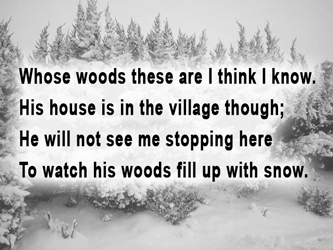
• Why is the narrator concerned with who owns the woods? There seems to be this sense conveyed in the poem of being worried about being spotted in the woods. Is the narrator taking a short cut across someone else’s property? Why does he stop to think about the owner of the woods at all?
• It’s a stretch but we could think about it this way. Imagine you are driving on a road at night that goes through some wooded country area on a wintry night. You suddenly get an urge to pull your car off to the side of the road, get out, and to go stare at the woods while you watch the snow fall. Would that be strange? Actually, it would be a little odd. So perhaps that might help us catch a little bit of the strangeness in the narrator’s actions here.
• Similar to our previous question, why isn’t the narrator sure who who owns the woods? One practical answer is simply that when you are traveling on a snowy night, it’s easy to lose one’s sense of direction. The narrator of the poem has not lost his way, nor is that implied, but does the narrator know exactly where one person’s property begins and another’s ends? The first line here could be quite innocent—it conveys nothing more than the evocative and mysterious feeling of being alone in the woods on a snowy night.
• Alternatively, using terms from psychoanalysis we can suggest something slightly more sinister. “Woods” can be regarded as a dream symbol or an archetype for a woman’s private parts. The narrator is then getting out to look at these “woods” that clearly belong to another. There is a sense that he is transgressing some type of taboo, but that as long as he isn’t caught, perhaps there will be no problem.
• Some people suggest the absent owner implies God. But we might find this questionable, if we consider that God is supposed to be all knowing. Not being seen by the owner seems to be of some significance for the poem—so this seems to go against the interpretation that the missing owner is God.
• Alternatively, we could argue the absent owner is God as a deist might see God. This is particularly pertinent in the first stanza. Deists reject organized religion. They reject the notion of divine inspiration. However, they still believe in God. How is this? For them, God basically created the world via natural law, then he stepped aside. God created the world, but he is not present in the world. Thus, it can be suggested that the Deist God is the absent owner here. Still, we can question this interpretation by asking why does “God” live in the village? Why does God only own the “woods”? Perhaps the “woods” represent fundamental natural law, while the “village” human rational spirit? This interpretation might open up more questions than it resolves.
• As we’ve already alluded to, there are clear dichotomies being drawn up in the first stanza. The “woods” surely represent something basic and primeval, while the village represents civilization, reason, and man. This might sound artificial and forced at present, but as we press on this explication will become clearer.
Stopping by Woods on a Snowy Evening: Analysis of Second Stanza
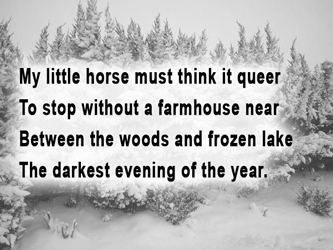
• Why is the narrator worried about the horse at all? Surely the horse doesn’t really have any such thoughts, right? The horse just does what it’s told. At its best, the horse might be cold and hoping to get into a barn soon, but it’s not capable of actually putting question to the narrator’s motivations! This suggests we should interpret these remarks as a metaphor pointing toward something.
• Horse is an important symbol. A horse is a animal, so it’s part of nature. Yet, at the same time a horse is domesticated, so it’s part of man’s world. Note we did get a contrast like this in the first stanza. The “woods” can be said to represent nature, while the “village” man. The narrator with his horse is sort of standing at the edge of civilization, and gazing out in nature. In this case, the horse could be viewed as a bridge between the two realms.
• Another possible way to view the horse is as a sheep. The horse is a domesticated animal, it does what it is told, it doesn’t question things. You see, the horse does not want to stand out or do anything potentially strange. These days we commonly compare this type of behavior with a sheep, but here perhaps a horse is fulfilling that role. The horse in this case represents civilization—especially the blind adherence to custom.
• There are no farmhouses near, so we are in the wilderness. We’ve moved away from civilization.
• The road is between the “woods” and a “frozen lake”. Water is an important symbol. Often it represents our underlying passions, our deep feelings. Yet here, the water has been frozen over. Is that suggesting something?
• “The darkest evening of the year” suggests the winter solstice. One could suggest Christmas here—which roughly corresponds with the winter solstice—but Stopping by Woods on a Snowy Evening seems to be devoid of any specific Christian allusions. In fact, that might be precisely why the solstice is referred to as opposed to Christmas. The winter solstice is potent with deep mythical imagery. It’s the time when all life would seem to be at an end, when the rational light of the sun would seems to have deserted us. We’re on the brink—ghosts and spirits from the beyond are running rampant. Yet from this we do return. While the Christmas holiday is very hopeful, how hopeful were previous customs, say those associated with Yuletide or Saturnalia? Perhaps older customs suggested the solstice was a time for revelry and letting go—basically partying, drinking, and eating—a time to let go of inhibition. The idea of letting go of inhibition might be key to understanding the poem.
Stopping by Woods on a Snowy Evening: Analysis of Third Stanza
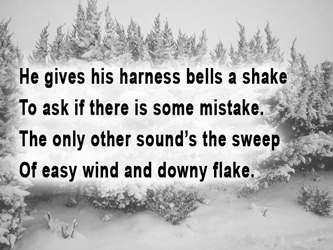
• Bells are another important symbol. Bells are commonly used in religious ceremonies. For example, in Catholicism when bread and wine are transmuted into the flesh and blood of Christ, bells announce the event. Bells herald the coming of Christmas. If you investigate the names for all the components of a bell, you’ll see that the outer rim is described as “lips”, the opening as a “mouth”, and the clapper as a “tongue”. A bell can literally be speech. In this manner it might potentially represent logos, man’s rationality, the light of reason, or perhaps even God.
• Another way to view bells is as an alarm. We’re all familiar with the notion of an alarm bell. In this case, the horse is perhaps sounding an alarm that the narrator is going too far.
• The narrator suggests that the horse is asking the human if he is making a mistake. Clearly this is a metaphor of some sort. Again, the horse does what it is told. It rigidly holds to tradition, and sees lack of adherence as taboo. Those who adhere strictly to custom regard deviant behavior superstitiously and suspect the worse when they observe it.
• The only other sound is the “wind and the downy flake”. We have to ask, does a downy flake really make a noise? Or is it the silence itself that is a noise? Wind is deeply symbolic. It represents spirit—like the primeval spirits that prowl about in the night. Here there is something very soothing and cloying about the wind—that makes it attractive. We all know what it means when a woman is described as “easy”—so here to there are potential Freudian dream symbols present.
• The bells perhaps here can be contrasted with the wind. The bells potentially represent a wake up call — asking the narrator to come back to civilization, to logos, to reason, to custom. Yet the wind is just the opposite. It’s the seductive call of the wild, potentially asking us to let go of reason and to simply feel. It asks us to lower our inhibitions.
Stopping by Woods on a Snowy Evening: Analysis of Fourth Stanza
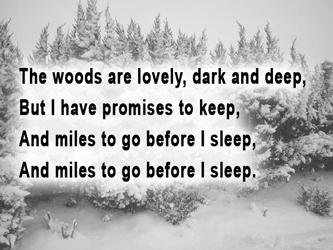
• Interestingly, an editor, Edward Connery Lathem, once added a comma after dark. It’s interesting to note how this second comma changes the meaning of the sentence!
• Immediately we get a contrast here, between “the woods” and “promises to keep”. “The woods” seem to be this primeval essence, while promises to keep part of the civilized world. This is the same contrast we’ve been getting basically every stanza.
• Also, contrast “miles to go” with “sleep”. This is the difference between something productive according to society as opposed to letting go and doing absolutely nothing.
• Why is the last line repeated twice? There are many possible answers. One possibility is that conforming to society is moving into a lockstep—marching in a sense. The repetition reflects this marching into lockstep. Do you see? To engage in custom is to do the opposite of thinking, it’s just to follow. The narrator is returning away from the primeval, and like reciting a mantra or a well-memorized prayer, he’s falling back into repetitive custom.
• As has already been noted, there’s a missing non-rhyme on the third line. Perhaps this is okay, because there is no fifth stanza. Or perhaps as we’ve returned to civilization, we no longer wish to have a line which doesn’t quite fit. There are many possible suggestions here.
• Sleep is a letting go. Many who have read this poem suggest it is a metaphor for death. Some have even suggested there is a wish for suicide in these words. We don’t see this, instead we think there’s a desire for letting go of inhibition, which can either metaphorically or literally lead to suicide—but but need not do so—what it leads to is a dissolution of the current self.

Stopping by Woods on a Snowy Evening: Analysis of Meaning
Any “Stopping by Woods on a Snowy Evening” analysis can offer many possible interpretations. We admit ours is merely one more, and we could easily be wrong. Honestly, we hope you’ll disagree and come to your own unique conclusions. Our goal here is only to stimulate your imagination, not to think for you! Now, to begin with our interpretation.
Stopping by Woods on a Snowy Evening is a poem of contrasts that juxtaposes man, as being civilized and guided by custom against nature which is raw and primeval. Man forms civilization via obligations and expectations, but once we go beyond these we confront the great unknown. Man sets up boundaries, taboos, borders not meant to be crossed—and when we journey beyond this we enter the great unknown.
The first contrast we get is in the first stanza. In society we own things, yet who can really own nature? Who can really own the “woods”? There’s something illicit going on when the narrator stops to share an intimate experience with these woods, and then glances about nervously as if he might have been seen by the absent owner, who is off in the village. The narrator is sliding out of his civilized veneer and venturing into a more dangerous primeval world. The owner in the village might think he owns the “woods” but has he ever stopped to watch them fill up with snow? His ownership is a superficial thing when compared with the narrator who now sees the woods for what they really are.
The horse, being a creature of man, and fully civilized is like an old superstitious housewife that fears all these primeval forces and can’t but think that something of no good is likely to come from all this intimate exposure to them. This is the darkest part of the year—not just the witching hour, but the creepiest witching hour of the entire year, and here is the narrator out in the thick it. There’s no place for typical human warmness, the lake has frozen over, this is a land as unknown to us as the outer reaches of space. The normal rules do not apply here—only nature’s unreasoning and incomprehensible rules.
The horse sounds the bells of caution—bells of alarm. This is the voice of civilization trying to call the narrator back before he verges too far off course and cannot return. The narrator is at the edge of civilization, and if he goes just a bit farther, he’ll fall completely out of it. Yet, these primeval and chaotic forces of nature clearly act in a seductive manner. The wind makes its whispery call, and the small downy flakes cast a silken spell. There’s both something sexual and otherworldly happening here. We see now, why at the beginning of the poem, the narrator felt paranoid about being seen. He is breaking taboo—and venturing into areas where he is not supposed to go.
In the end, it is the voice of custom, man’s civilizing voice, that manages to pull back the narrator from the brink. The narrator has things to do, he’s got to fall back into step and fulfill society’s obligations. These are the very obligations that help all of us keep our feet on the ground, so that we don’t fall into the deep, dark unknown. To let go of these obligations and expectations is to fall into alcoholism, abandonment, pure instinct, unvarnished passion, and maybe even at least metaphorically suicide. The narrator is not ready for this total dissolution, his obligations call him back. He’s falling back into the lock step of society, not necessarily a march, but a kind of repetitious dance, that keeps him from falling off the edge.

We hope you enjoyed our “Stopping by Woods on a Snowy Evening” analysis. Don’t forget to subscribe to our poetry updates!